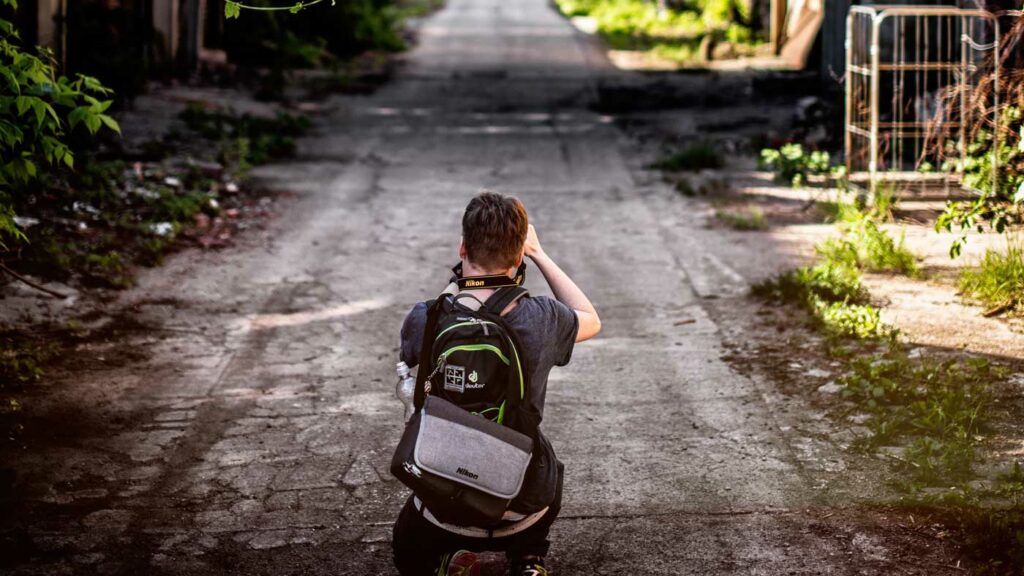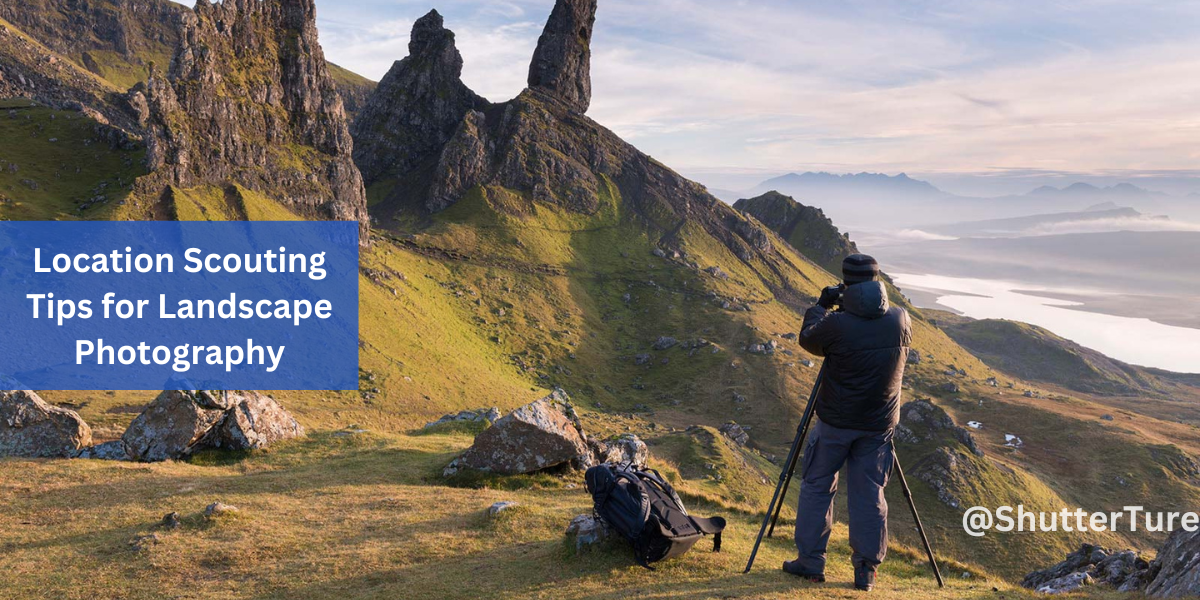Location scouting is an essential step in photography. I used to think that pro landscape photographers always get lucky.
The truth is they know the area like the palm of their hands; they spend countless hours roaming and studying locations.
Location scouting can fundamentally improve your photography if you do it the correct way.
In this article, I will explain why it is essential and what tools you can use to collect vital data about locations.
What Is Location Scouting, and Why it’s Essential?
Location scouting is the research process in a specific area to collect necessary information about a place you want to visit. You can do it online or on the field. I usually do both to have extensive knowledge.
If you do location scouting effectively and explore the area before your visit, you will get familiar with the weather, light, and topography circumstances.
It’s essential to work on your location scouting skills. I can assure you it will improve your pictures. I believe It’s an fundamental step in photography.
Let’s see an example.
I was planning a visit to Alentejo, Portugal. So I researched the coastline on google maps for interesting rock formations.

I’ve found this promising beach, so I kept looking. Once I had all the necessary data of the light and weather, it was time for my visit. I arrived early to have some time to explore the scene.
It’s the same location, but I scouted the area and changed my perspective. Once I found an exciting foreground that worked with my background, I just had to wait for the sunset.
If I didn’t scout this place online and spent 3 hours walking around the beach, I probably wouldn’t have a decent image now.
Before I talk about the location scouting tools, I need to tell you one of my failure stories that drastically changed how I do my research today.
The Story of my Failure
It happened in the Dolomites. I have never visited this place before. I only saw some jaw-dropping shots on social media. It’s really a magical place.

So I decided to visit during our trip to Italy.
We woke up at 2 am to photograph the mountain at sunrise. After 3 hours of traveling, we arrived but had no clue where we were. It was dark, and the area was full of hills. We couldn’t even see what we came for; the mountain.
And it got worse.
We found a decent viewpoint before sunrise, but the rising haze totally blocked the peaks’ view. On top of this, there were electric shepherds everywhere, and we couldn’t wander freely.

There were various problems because we didn’t do a decent job of scouting that location.
At this point, I decided to master my location scouting skills before I go on a journey.
And with some simple tools, you can do it as well.
So let’s jump right in.
Get the light right
Before showing you the light tools, I feel the need to explain the atmospheric properties responsible for a fantastic sunrise or sunset.
And there is no better way than explain with an illustration:

Most importantly, the sun’s light has a much longer path when it’s setting and a shorter path when it’s at peak. As a result, the air at sunset is thicker, and the light travels a longer route, which modifies the sunset color.
So the sun is our light source, then the atmosphere is our filter, and it gets more red before the sun fell over the horizon.
There are two more things that we need for a good sunset.
Firstly we need clouds above our location which receives those orange and reddish lights.
Secondly, we don’t need clouds on the horizon because it would block the sun. Therefore we won’t have a pretty sunset.

So, now we know how the sun paints the sky.
It’s time to check the tools.
SunCalc
Suncalc tells you the position of the sun. Search for your location in the left sidebar or drag the map around to locate a spot.

There is also a timeline at the top of the page. It can predict the time of the sunrise or sunset. Therefore you can precisely plan your visit.
On top of that, you can select any date. Pick a future or past day and check how the sun will rise or set. It is a pretty unique tool I and I use it often.
Now the interesting part, let’s check the quality of the sunset.
Sunset WX
This is my personal favorite; Sunsetwx literally tells you the quality of the sunrise or sunset. Therefore you can plan which condition will work better for your scene. It’s pretty awesome. I have tested it a few times, and it was pretty accurate.
The site is showing the strength of the sunset based on atmospheric conditions. The red indicates the highest possibility, and blue indicates the least chance for an incredible sunset or sunrise.

Let’s say I am living in Los Angeles. I can immediately tell that the sunrise is going to be gorgeous. The whole state is bathing in red and orange.
So definitely check this before you planning a shoot.
It’s worth following their Twitter page, where they always share some great pictures and updates.
Weather analysis
Windy
Windy.com is an exceptional tool for weather forecast visualization. You can turn on different layers; Such as wind, thunder, rain, waves, clouds, etc.

Once you select a condition, run a prediction simulation in the bottom bar. so you can see what to expect.
I mean, this is brilliant. Just look at those animations. It’s impressive how much data we can access these days.
Weather Apps
You need to be aware of the weather. Especially in the mountains, it is quite challenging to predict the conditions there. One of my most memorable hikes was in Gesause National Park when we were stuck in our apartment for two days due to an intense blizzard.
Once the storm was gone, we packed up and were ready to explore the mountains, but the snow just got deeper and deeper, and the temperature dropped significantly during our descent. As it turned out, we were not prepared for this cold and the deep snow.
If I would check a few weather apps, I could prepare myself better for this hike.
Don’t make the same mistake that I did. At least check some weather apps and see what you can expect at your destination.
Location scouting on the field
Besides online location scouting, I encourage you to do it in person as well. This is how location managers do their research for a film’s screenplay. It is much easier than online because you can experience the conditions in real life.
By walking
If you have enough time to visit the area more times, then do location scouting on the field. Spend a few hours to see which angle works the best for you. Besides the composition techniques, try to find exciting textures for your foreground or the right subject for your background.
If you can’t visit multiple times, try to arrive at your spot a few hours earlier.
Shoot pictures with all of your lenses; wide-angle, telephoto, or fix, and see what is suitable for that particular location. Maybe there is an interesting object in the background, or perhaps you find splendid patterns beneath your feet.
Once you find some exciting compositions, it’s time to explore them in different light conditions or even different seasons. I usually scout a location at sunrise and sunset. As a result, I can figure out which situation is the best for my scene.
By flying
If you have a drone, then you can quickly look around from the sky. Maybe there is a lovely little pond behind the trees or a beautiful waterfall in the valley. With a drone, you can look around fast in a few kilometers radius. Therefore you can broaden your location scouting sight.
I wrote a detailed article about drone photography. If you are new or want to dive into the topic, you can read it here.
Ask the locals
Get advice from locals, probably they know the area better and can point out interesting locations that may have never been photographed.
Even better, if you talk with a landscape photographer who lives in the area, they could tell you essential information.
There are many Facebook groups where you can ask for help and meet new people. Don’t be shy and get connected.
Mobile apps for Location Scouting
If I could recommend one app, that would be Photopills. This app will tell you all the necessary pieces of information, such as the sun’s direction, moon, milky way, and so on. It costs only $9.99.

Besides PhotoPills, I use these apps on my phone:
Google Maps
Google Earth
Weather
Conclusion
Location scouting is crucial, so make sure you do your research and get familiar with the area before shooting.
To sum it up:
- Use google maps
- Search on YouTube
- Study the light
- Check the weather
- Use apps on the field.
If you follow these steps, you will have a much better understanding of your locations and conditions.
But most importantly, it will dramatically improve your photography.
If you have anything to add to this list, please let me know in the comments below.

